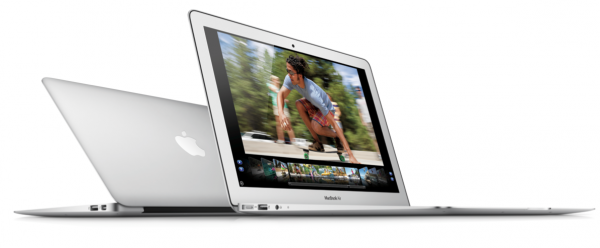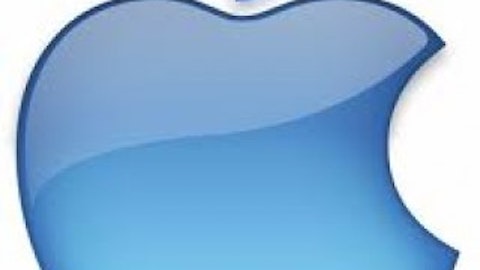A few days back, I penned a somewhat bearish post on Apple Inc. (NASDAQ:AAPL). I said ‘somewhat’, because the bearishness or bullishness of the post depended on the reader’s own conviction. However, what I managed to clearly bring forward was the fact that Apple is in need of a decisive strategy to counter the market’s growing inclination toward cheaper smartphones.
Despite the article’s pure intention, a good number of commentators came up with all sorts of arguments against my case. It then became clearly evident to me that investors don’t want to call a spade a spade. There is still a lot of sugarcoating going on, and in my opinion, this could cost investors a great deal.

Numbers don’t lie
Analysts are not always right. Every ardent Apple lover knows of Topeka Capital Markets analyst Brian White. White, who is known for his ever bullish disposition toward Apple Inc. (NASDAQ:AAPL), had placed a price target of $1111 on Apple, not once, but twice. His last bullish call on Apple came earlier this year, and since then, Apple’s share price seems to be moving in the opposite direction. My point; all analysts, regardless of their prowess, occasionally make wrong predictions.
The same, however, cannot be said about numbers. Numbers don’t lie. A simple number can say a lot. Incidentally, I learnt that from the late Steve Jobs. Remember how he would always give life to numbers when making presentations? For instance, when introducing the iPod in 2001, he said that it had 5 GB storage, adding that its storage was equivalent to 1000 songs.
That aside, the numbers that I am speaking about in this case are sales figures. There is a huge argument that Samsung is not currently bigger than Apple Inc. (NASDAQ:AAPL).
Here is a short peek into both Samsung and Apple’s sales figures in the final quarter of fiscal 2012.
Gartner argues that both Samsung and Apple accounted for 52% of all smartphone sales in Q4 2012. Samsung, however, towered over Apple, globally, in smartphone sales. Samsung’s global smartphone sales rose a mind boggling 85.3% from Q4 2011 to 64.5 million units in Q4 2012. Apple Inc. (NASDAQ:AAPL)’s global smartphone sales, however, came in lower at 43.5%, up 22.6% from 2011. This demonstrates that, by all means, Samsung, or Google Inc (NASDAQ:GOOG) for that matter, is the global smartphone leader.
The contentious China issue
Another thing that investors don’t want to acknowledge is that China has become the world’s most potent smartphone market. The chart below speaks for itself.

The chart above is indicative of just how China has become an important play for handset makers.
In China, Google is unquestionably reminiscent of the biggest bully in the elementary school playground. Its dominance has stretched to the extent that the Chinese government is crying foul, saying that the Android operating system is discriminating against local firms.
Incidentally, Samsung controls 42.5% of Android’s global market. This dominance trickles down to China, where Samsung claimed the top spot for 2012 for the first time. It tripled its sales to sell 30 million units in 2012. This translated into 18% of the Chinese smartphone market, up from 12.8% a year earlier.
As it is, China is dominated by Samsung, which is essentially Google. The likes of Nokia Corporation (ADR) (NYSE:NOK) currently settle on the fringes of the market. It was the biggest loser in China, and arguably in the world. In China, Nokia lost virtually all its share, dipping from a formidable 30% to a paltry 3.7%. A similar pattern was also noted in global sales.
Its not over for Apple, just the beginning
Here is where the story changes. Despite steep competition from Google and Samsung, Apple still has a chance of gnawing into the Chinese market, a huge chance for that matter. Chinese consumers still warm up to Apple Inc. (NASDAQ:AAPL)’s iPhone. This was demonstrated by the two million iPhone 5 units that were sold in the opening weekend of the flagship model’s sales in the region. Currently, Apple comes third in China with an 11% market share. It closely trails Lenovo, which enjoys a 13.2% market share.
The edge that Samsung, and Google for that matter, has in China is that most Samsung devices and other Android-based smartphones are affordable. Most Chinese carriers don’t bear reservations for subsidization. This means that Chinese consumers are, in most cases, compelled to pay the full amount for a smartphone. This compels them to go for cheaper smartphones under the 1000 Yuan, or $160, mark.
In conclusion, there is still a lot of wiggle room for Apple Inc. (NASDAQ:AAPL). Nonetheless, the faster it pushes through with a budget proposition to offset its traditionally high prices, the sooner it will dominate China and a host of other emerging markets, like India and Brazil. Notwithstanding, Apple is still a force to reckon with in the smartphone space.
The article Dear Apple, Let’s Call a Spade a Spade originally appeared on Fool.com and is written by Lennox Yieke.
Copyright © 1995 – 2013 The Motley Fool, LLC. All rights reserved. The Motley Fool has a disclosure policy.

